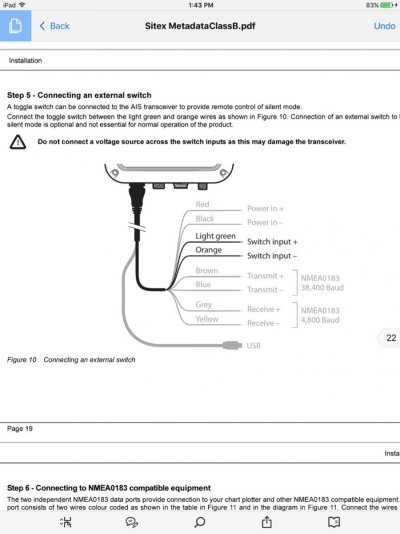Spottsville
Senior Member
- Joined
- May 3, 2012
- Messages
- 265
- Location
- US
- Vessel Name
- Quiet Company
- Vessel Make
- Great Harbour GH-47
In the last year there have been several discussions about the advantages of AIS in collision avoidance as well as the ability to identify other vessels before you can see them. Some are opting to buy VHF radios with AIS included but little discussion has taken place regarding additional capabilities some manufacturers are including in their units.
When we wanted to add AIS to our boat we took another cruisers suggestion and paid a little more and added a stand alone AIS vs a radio with the capability. We are sure glad we installed a Vesper XB-8000 unit. At the time we did not appreciate the units ability to upgrade the firmware. But now almost three years later we are sure happy we bought an upgradable AIS. Vesper have provide free updates to the software several times and one even provided an anchor watch capability. Now they are at it again with their new smartAIS function. I'm not going to try to describe this new function but here is the link so you can check it out for yourself.
https://www2.vespermarine.com/
So it just goes to show that sometimes you can pay a little more and come out way ahead!
No connection just a very satisfied customer.
When we wanted to add AIS to our boat we took another cruisers suggestion and paid a little more and added a stand alone AIS vs a radio with the capability. We are sure glad we installed a Vesper XB-8000 unit. At the time we did not appreciate the units ability to upgrade the firmware. But now almost three years later we are sure happy we bought an upgradable AIS. Vesper have provide free updates to the software several times and one even provided an anchor watch capability. Now they are at it again with their new smartAIS function. I'm not going to try to describe this new function but here is the link so you can check it out for yourself.
https://www2.vespermarine.com/
So it just goes to show that sometimes you can pay a little more and come out way ahead!
No connection just a very satisfied customer.

